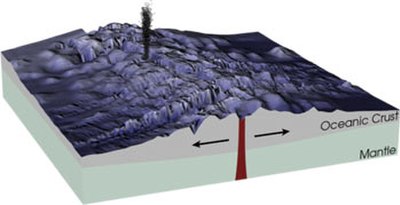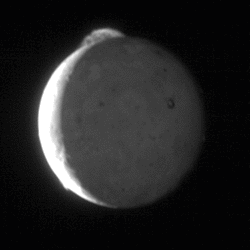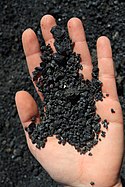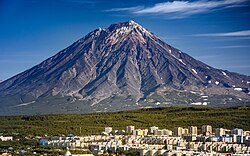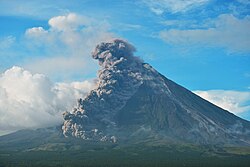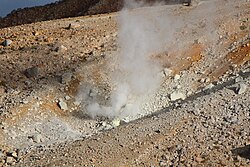Llullaillaco Volcano, Argentina-Chile Border 2009-12-09
Autor:
NASA Astronaut photograph ISS022-E-8285
Formát:
720 x 720 Pixel (182214 Bytes)
Popis:
The summit of South America’s Llullaillaco Volcano has an elevation of 6,739 meters (22,110 feet) above sea level, making it the highest historically active volcano in the world. The current stratovolcano—a cone-shaped volcano built from successive layers of thick lava flows and eruption products like ash and rock fragments—is built on top of an older stratovolcano. The last explosive eruption of the volcano, based on historical records, occurred in 1877.
This detailed astronaut photograph of Llullaillaco illustrates an interesting volcanic feature known as a coulée (image top right). Coulées are formed from highly viscous, thick lavas that flow onto a steep surface. As they flow slowly downwards, the top of the flow cools and forms a series of parallel ridges oriented at 90 degrees to the direction of flow (somewhat similar in appearance to the pleats of an accordion). The sides of the flow can also cool faster than the center, leading to the formation of wall-like structures known as flow levees (image center). Astronaut photograph ISS022-E-8285 was acquired on December 9, 2009, with a Nikon D2Xs digital camera using an 800mm lens, and is provided by the ISS Crew Earth Observations experiment and Image Science & Analysis Laboratory, Johnson Space Center. The image was taken by the Expedition 22 crew. The image in this article has been cropped and enhanced to improve contrast. Lens artifacts have been removed.
Více informací o licenci na obrázek naleznete zde. Poslední aktualizace: Mon, 19 Feb 2024 15:38:29 GMT
Relevantní obrázky
Relevantní články
Sopka
Sopka či také vulkán je porucha povrchu planety či měsíce, kudy se na povrch dostává směs roztavených hornin (magma) a sopečných plynů z hlouběji umístěného magmatického rezervoáru. Samotný termín sopka je často používán pro označení tělesa ve tvaru kuželovité hory, nicméně jsou známy i druhy sopek, které žádný kužel nevytváří. Tvar je především závislý na složení magmatu, charakteru a intenzitě sopečné erupce. Na Zemi se sopky nejčastěji vyskytují podél okrajů tektonických desek a nad tzv. horkými skvrnami, situovanými mimo tyto okraje, což vysvětluje teorie o deskové tektonice. Jinými formami jsou například bahenní sopky nebo kryovulkány, vyskytující se na některých měsíců sluneční soustavy: Europa, Enceladus, Triton, Titan. Věda, zkoumající sopečnou činnost, se nazývá vulkanologie.
.. pokračovat ve čtení






